| Start
Intro
Day
A21
Day A23 |
| Day A22 - Seaside
towns |
| April
23,
2013
Aigues-Mortes to Palavas-les-Flots
16 miles |
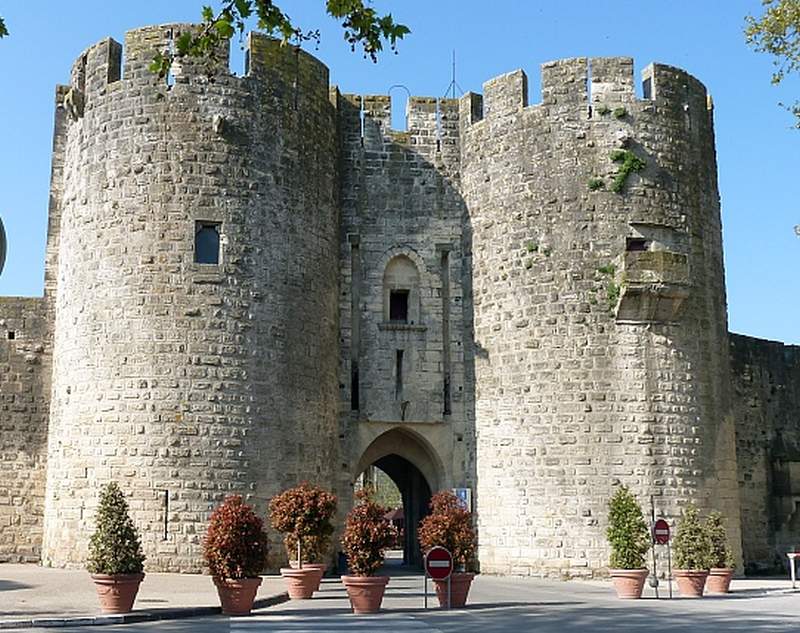 |
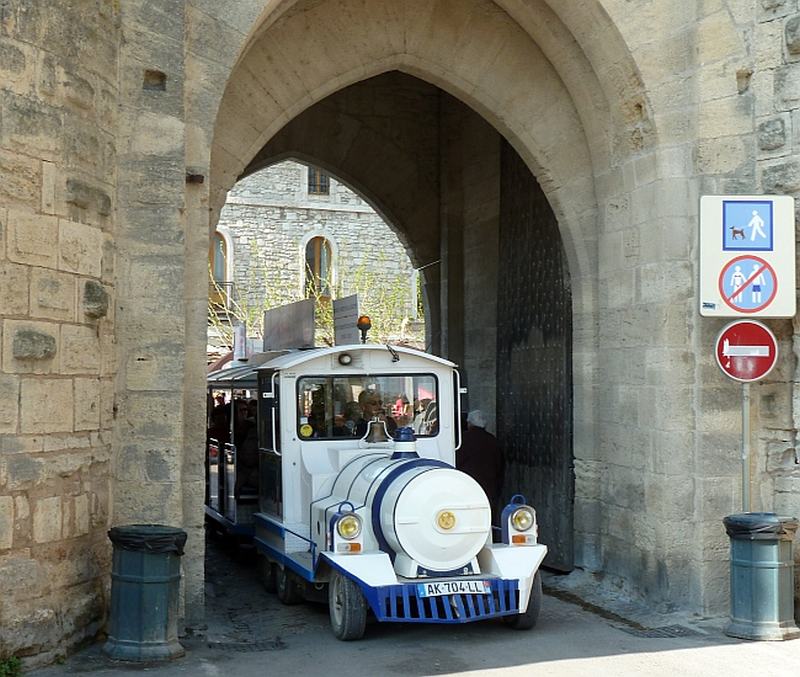 |
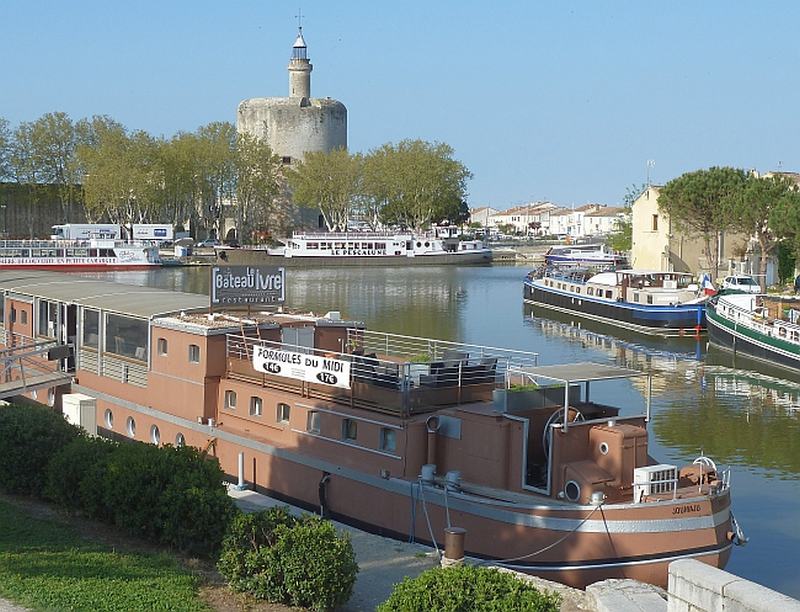 |
| Scenes from Aigues-Mortes, a Crusader town that attracts tourists |
|
Exhausted and parched last night, I went across the road from the Aigues-Mortes hotel to a brasserie. A brasserie is not a place with bra's but a place with bars. There I ordered a bock of Kronembourg. The locals nodded approvingly that a foreigner knew what a bock was - which wasn't actually true. It was writ on the blackboard as a serving-size for beer, and I just ordered what was writ. It turned out to be a small glass. Unthinkingly, I also ordered a Pizza Neapolitain, which has cheese, tomato, olives and anchovies. Well, I must have forgotten that olives and anchovies grow on trees here. There was an abundance of both in the pizza, and it combined with cheese and some hot sauce to produce a salt mine on a plate. Come to think of it, Aigues-Mortes is a big producer of sea salt, so they probably added some of that, too. This is called a big mistake. It took beaucoup d'eau to neutralize it by even a tad. So much for comfort food. Aigues-Mortes is a very old walled city with excellently preserved mile-long ramparts. It was once France's leading port, the launch point for more than one Crusade. In the 16th and 17th centuries, Protestants were granted a safe haven from Catholic oppression here, as they were in just a few other places. It's now known for its history and visited by tourists because it's picturesque and is a base to visit several nearby beaches. Plus you can buy ice cream in 69 flavors, take home a two-inch plaque with your name to stick in a dresser drawer, ride a model steam train actually powered by gasoline, buy and eat confectionary you could probably resist at home, and send postcards to people to whom you should write but sending a picture is easier. I couldn't spend long here, because I had set myself a challenge which was to get to Agde, the end of this hike, in the three days before the rain that was predicted for Friday. A little more than 45 miles to go, and dividing them equally defined three approximately 15-mile days, and the two nights would fall in places with a nice crop of hotels. Tonight would be Palavas-les-Flots, and tomorrow would be SÍte. Or so I planned it, probably to the same high standard as I brought to ordering last night's pizza. Leaving Aigues-Mortes, one reaches the open sea just four miles later, and finds a sequence of modern towns, beautifully-maintained, built around recreational boating and marinas, often with flower pots to grace the urban scene. These towns were quite as nice as equivalent Southern California or Florida communities. Built in some cases on reclaimed swamp, they were planned but not over-planned, and built to decent standards mainly in a muted, Mediterranean style that shouldn't quickly age from over-emphasis. The towns here are not at all like the Riviera towns on the Cote d'Azur. For one thing, they're new (mainly post-1960), and for another the terrain is flat. But they're apparently just like the Cote d'Azur when it comes to summer visitors in that they swell populations to breaking point. Meanwhile, in spring, I've enjoyed finding affordable accommodation on a day's notice - and the weather is now just like summer except it has pleasantly milder temperatures. When I didn't feel that I was walking in Gallic versions of Huntington Beach or Seal Beach, the road crossed waterways, and there were wildflowers beside the road - sometimes a riotous mix of poppies, daisies and primroses. I bought a baguette and cheese in last night's supermarket (the one next to the brasserie), and ate it with a few cuttings from my dried salami stick to add some flavor. I bought this salami a week ago, and it's ripening nicely stored in my backpack, warmed by the sun on one side and by my back on the other. It should be thrown away now, but it hasn't really started suppurating. When it does, I'll stop eating it, of course, though I may keep it a few days longer to add some, err, atmosphere to my backpack, and then I will indeed throw it away because I'm not going to break our food laws by bringing it home. It's just that I start to laugh when I think of the effect it'll have on the food inspection dog at Tampa airport. That's the one that somehow detected an apple in my bags a couple of years ago. The food inspector told me afterwards that an apple would easily register a hundred on the dear little dog's smell scale but all I saw was a wagging tail. Well, I've thought about that dog from time to time, and tonight in Palavas-les-Flots I thought about him some more. Soon enough, in my dreams, the Palavas hotel dog took on the persona of the Tampa dog, and signaled his inspection of my backpack at Tampa airport with a breathtakingly enthusiastic double-somersault - not even muted to conform with government rules. At this signal the dog, and his handlers also, yelped and howled with delight as they proceeded to poke around in my backpack to find the contraband. But as you know now, and they don't, I had already disposed of the suppurating salami - and so they found nothing. I dreamed pleasantly about this most of the night. 16 miles today, through modern and civilized beach towns on good surfaces in good weather - and no excitement. |
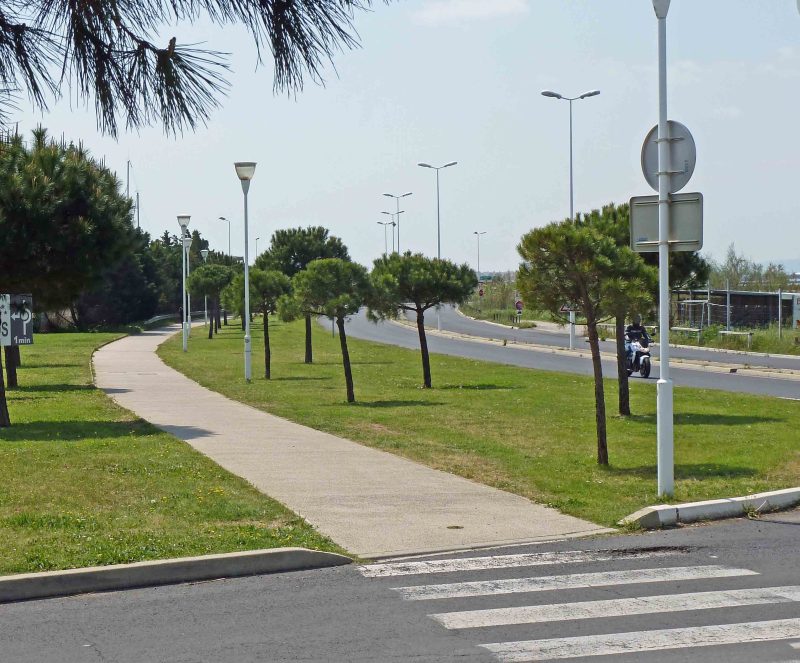 |
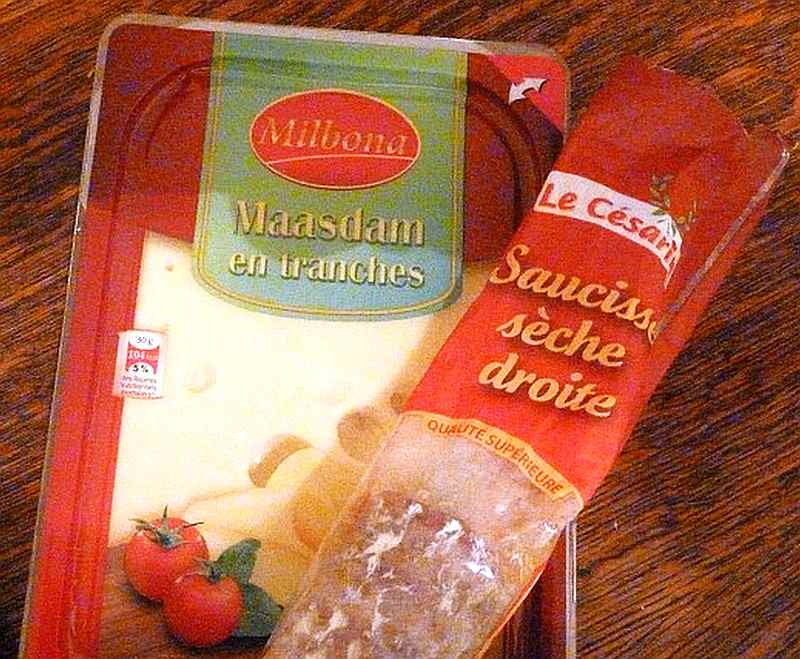 |
| French cheese with a Dutch heritage, and French sausage with an Italian heritage? I renamed the sausage "la saucisse du chien qui fait des culbutes" in anticipation of the real-life greeting that the food inspectors' dog may give the lingering smell of this sausage in my backpack. |
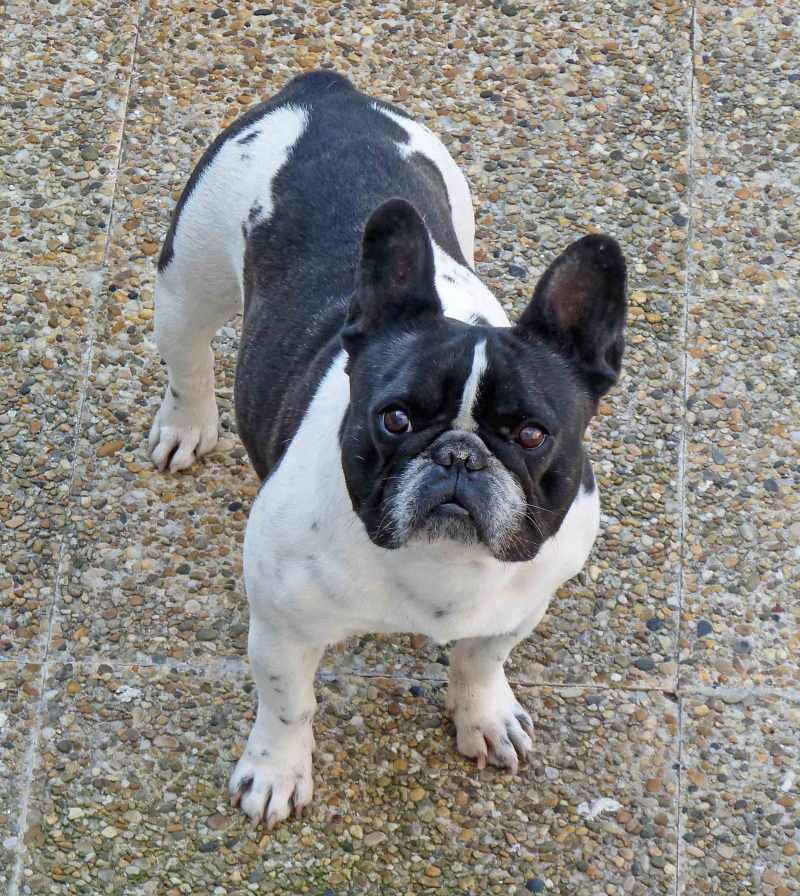 |
| Start Intro Day A21 Day A23 |
© 2013 Daryl May |